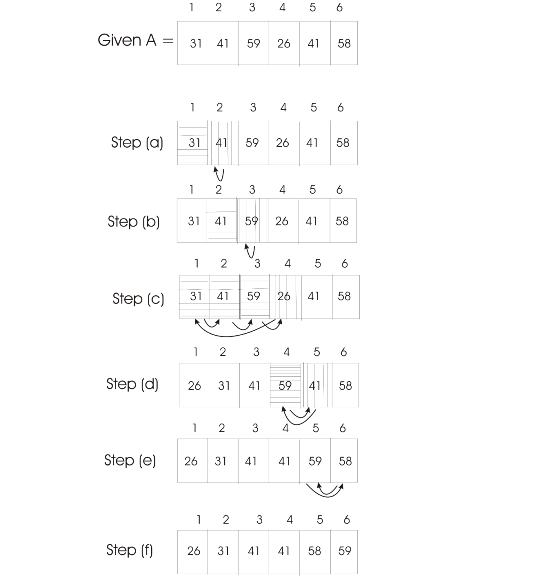Pseudocode for Linear Search
The pseudocode for linear search, it scans the sequence for v using a loop invariant:
Input: A sequence of n numbers  and a value
v.
and a value
v.
Output: An index i such that v = A[i] or the special NIL if v does not appear in A.
Linear Search (A, v)
1 for i =1 to n
2 {
3 if A[i] = v
4 return i
5 }
6 return NIL
Three properties hold for linear search:
• Initialization: It will start by presenting the loop invariant holds before the first loop iteration, when i = 1, the sub array A [1…n]. Therefore, consists of just the single element A [1], which is in fact original element in A [1]. Moreover, this sub array is searched, which shows that the loop invariant holds prior to the first iteration of the loop.
• Maintenance: Each iteration maintains the loop invariant. Informally the body of the outer for loop works by moving A [1], A [2], .and soon by one position to the right until the proper element found for v in if loop. The second property satisfies.
• Termination: Finally, for linear search, the outer for loop ends, when i exceed n+1. Substituting n+1 for i in the wording of loop invariant, Hence, the searched element found, which means that the algorithm is correct.
Suppose  and
and are
2 integer arrays to store binary equivalent of two decimal numbers.
Each of these arrays can store n bits.
are
2 integer arrays to store binary equivalent of two decimal numbers.
Each of these arrays can store n bits.
Suppose  is another
array to store the binary addition of A and B array.
The length of this array is 1 more than A and B array
because it may possible the addition can give one more value in the
array.
is another
array to store the binary addition of A and B array.
The length of this array is 1 more than A and B array
because it may possible the addition can give one more value in the
array.
Logic:
• Start fetching the elements of both A and B array from last index to 0th index.
• Add ith bits (that is ith element) of both A and B array. When ith bit of both array are 1 then place 0 at the i+1th position in C array and put 1 in the carry forward.
• When ith bits of both A and B array are added then it is also necessary to check whether there is any carry to ith bit from i + 1 bit.
Pseudo code:
BINARY-ADDITION 
1. Declare an array  to store
binary addition
to store
binary addition
2. 
//traverse the array in reverse direction
3. for 
4. 
5. 
6. 
//store the carry bit
7. 
8. return C
Analyzing the running-time:
The for loop in above BINARY-ADDITION() function iterate n time to fetch n bit of A and B array.
Therefore, the worst case running time of this algorithm is
 .
.

